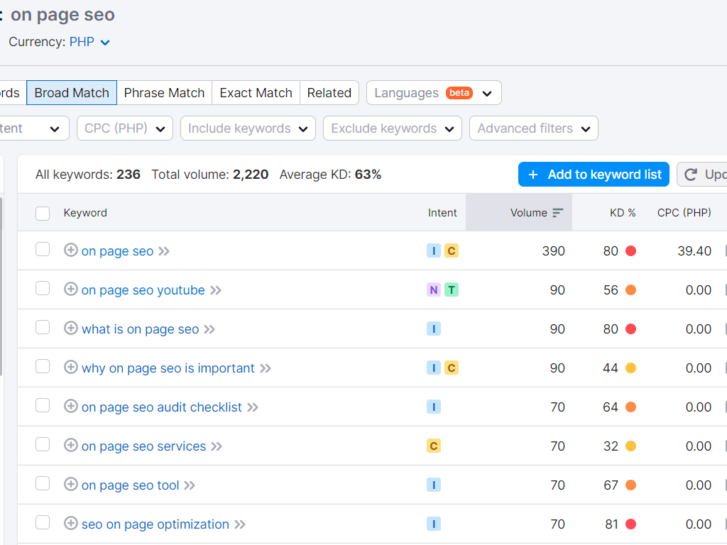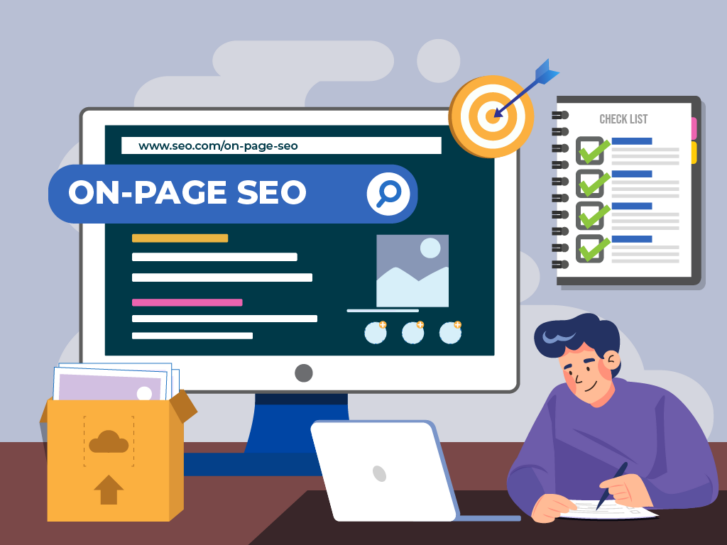The Comprehensive On-Page Checklist to Boost Your SEO in 2025
Want to make your pages rank high on Google? You won’t be able to do that if you don’t know where or how to start your on-page SEO — and with each Google update, this pillar of SEO gets more and more complicated. To keep you updated with the best and most relevant practices when it comes to this aspect of your website, I have prepared an on-page SEO checklist for 2024.
On-Page SEO Factors
On-page SEO, in simple terms, is all the ways you can optimize your website take place on your website. Tweaking certain elements of your pages can enable them to climb very quickly up the ranks when done right. These elements include essentially everything you can see on your webpage, like its title tags, headers, and images.
Webmaster’s Note: This is part two of our SEO checklist series. Part one covers our technical SEO checklist, so go back if you haven’t seen that yet. I also do deep dives into other aspects of on-page SEO in other articles, like the best content strategy for SEO, how to hack on-page factors, and ways to dominate niche keywords in your industry.
1. Identify Your Target Keyword
This is where any SEO effort should start. Identify which basic keywords you would like each page to rank for. From there, you can expand into common phrases, questions, and related words people use to find pages like yours through keyword research.
Key Aspects of Keyword Optimization:
- Keyword Research: Identifying the right keywords that your target audience is searching for.
- Keyword Placement: Sensibly incorporating keywords in titles, headings, the first paragraph, and throughout the content.
- Searcher Intent: Catering to why someone is performing a search, whether it’s to find information, make a purchase, etc.
Effective keyword optimization allows you to create pages that best meet user intent. This boosts your chances of ranking highly for your chosen keywords.

I have longer guides on the types of keywords you should look at, and another on how to do keyword research you can follow for this step.
2. High-Quality Content Creation
Quality content is the keystone of on-page SEO. It is, after all, fundamental to the selling point of Google — which is that it is the go-to place to find answers to your questions. It’s why Google pushes Helpful Content Updates every so often.
So, your content must meet Google’s standards of quality in order to make it to the top. To do that, your content must be authoritative, valuable to the reader, and deliver on the promises made by your meta tags and headings.
What Constitutes Quality Content:
- Originality: Your content must be unique and offer fresh insights.
- Relevancy: It should align with your target user’s intent and be updated regularly.
- Engagement: Content must encourage users to spend time on your site and interact with your offerings.
Creating content that exceeds user expectations can dramatically bolster your SEO as it can directly affect user engagement metrics and boost the credibility of your site.
Webmaster’s Note: Beyond making sure all new content is high-quality, however, is ensuring all of your existing content is also up to par. I’ll be covering that in part four of this series, so keep an eye out for that.
3. URL Structure
URLs are not only a ranking factor but also enhance the user experience when structured logically.
Features of an Effective URL Structure:
- Concise and Descriptive: A URL should be concise and explain your page content. No stop words.
- Keyword Inclusion: A relevant keyword can enhance a URL’s performance.
- Use Hyphens instead of Underscores: Conventional use dictates using hyphens to separate words.
A clear URL helps users and search engines make sense of the page’s content before they even reach it.
Here’s an example of a bad URL slug.

And here’s an example of a good, optimized one.

4. Title Tag and Headings
I find that certain practices for these two elements give the most benefit to a page’s SEO.
Best Practices for Title Tag and Heading Optimization:
- Use a Keyword-First Approach: Place keywords first in your title tag, as uninterrupted by stop-words as possible.
- Keep it Simple: Title tags should be concise to ensure the entire tag is displayed on the SERPs.
- Same Keyword, Different Phrasing: Use the same keyword in your title tag and heading 1. However, use different phrasing or wording for each.
- Insert Related Keywords: Do this for your heading 2, 3, and so on, where it makes sense.
- Avoid Duplicates: Use different title tags and headings for every unique page.
4. Meta Tags Enhancement
Meta tags, such as the meta description, serve as a brief pitch to users on search engine results pages. Other meta tags, like your image alt text and links, provide important context to both the user and crawlbot.
Tips for Enhanced Meta Tags:
- Compelling Copy: Write title tags and meta descriptions that accurately summarize the page content and entice clicks.
- Keyword Usage: Try to insert target keywords and/or related keywords effectively in your meta descriptions, and within the limit.
- Uniqueness: Each page should have unique meta tags.
- Be Descriptive: Your image alt text should not only include a related keyword but should also adequately describe what is seen on the image.
- Add internal and external links: Semantic search means Google can use the links in your pages to gain a better understanding of its content. Always add relevant internal links, and only include external links from trusted websites.
- Use Noindex Robots Meta Tag: Add this to prevent any pages with thin content, or pages with little value and no intent from appearing in the SERPs.
- Use rel=”canonical” Link Tag: Use this for any duplicate pages you have on your website. Doing this can help you control which version of the page gets indexed and ranks for your targeted keywords.
- Set your Open Graph Meta Tags: This will let you optimize how your pages look when they’re shared on social media.
- Set your Viewport Meta Tag: This configures how your pages are scaled and displayed on different devices and platforms, which is important for user experience (more on that later).
To get the most out of your SEO, don’t neglect this part of your on-page SEO checklist. The small tweaks here can add up to the big picture.
Well-crafted meta tags have the potential to increase click-through rates, boost your visibility on organic search and image search, enhance user experience, and also distribute link equity throughout your pages. All these contribute to how well your page ranks.
5. Internal Linking
Internal linking spreads link equity throughout your site and can help search engines discover new pages. Always link back to pillar content, or other high-value content on your website.
Benefits of Strategic Internal Linking:
- Navigation: They guide users through other relevant pages on your website.
- Page Authority: Anchor text can help to convey what the linked-to page is about, which can aid in ranking for those terms.
- User Time on Site: Providing relevant links can keep users engaged on your site for longer periods.
Good internal linking can significantly increase your engagement rates and contribute to building a robust site architecture. I have a separate post on how to build topical authority through internal linking you can check out.
6. User Experience (UX)
User experience affects on-page SEO because search engines favor websites that provide a positive user experience.
UX Factors to Consider in Your Website Design:
- Mobile-Friendliness: The site must perform well across all devices — but especially on mobile-view, as most users use Google through their phones.
- Ease of Use: The site should be navigable and logical in its layout. Navigation bars and other menus should be intuitive and prioritize the most important pages of your website.
- Page Speed: Pages should load quickly to reduce bounce rates. Follow this guide to site speed optimization for this point.
As UX becomes an even more important ranking factor, I find it is necessary to add to this on-page SEO checklist. Sites that deliver a high-quality user experience will dominate search engine results pages.
Key Takeaway
Mastering this pillar of SEO is crucial for achieving high rankings on Google, and staying updated with evolving best practices is essential. But with every update, what works best changes.
My 2024 on-page SEO checklist provides basically the most up-to-date practices for the elements on your website. Follow it, and you should be able to boost your website’s authority, credibility, and long-term SEO performance.
